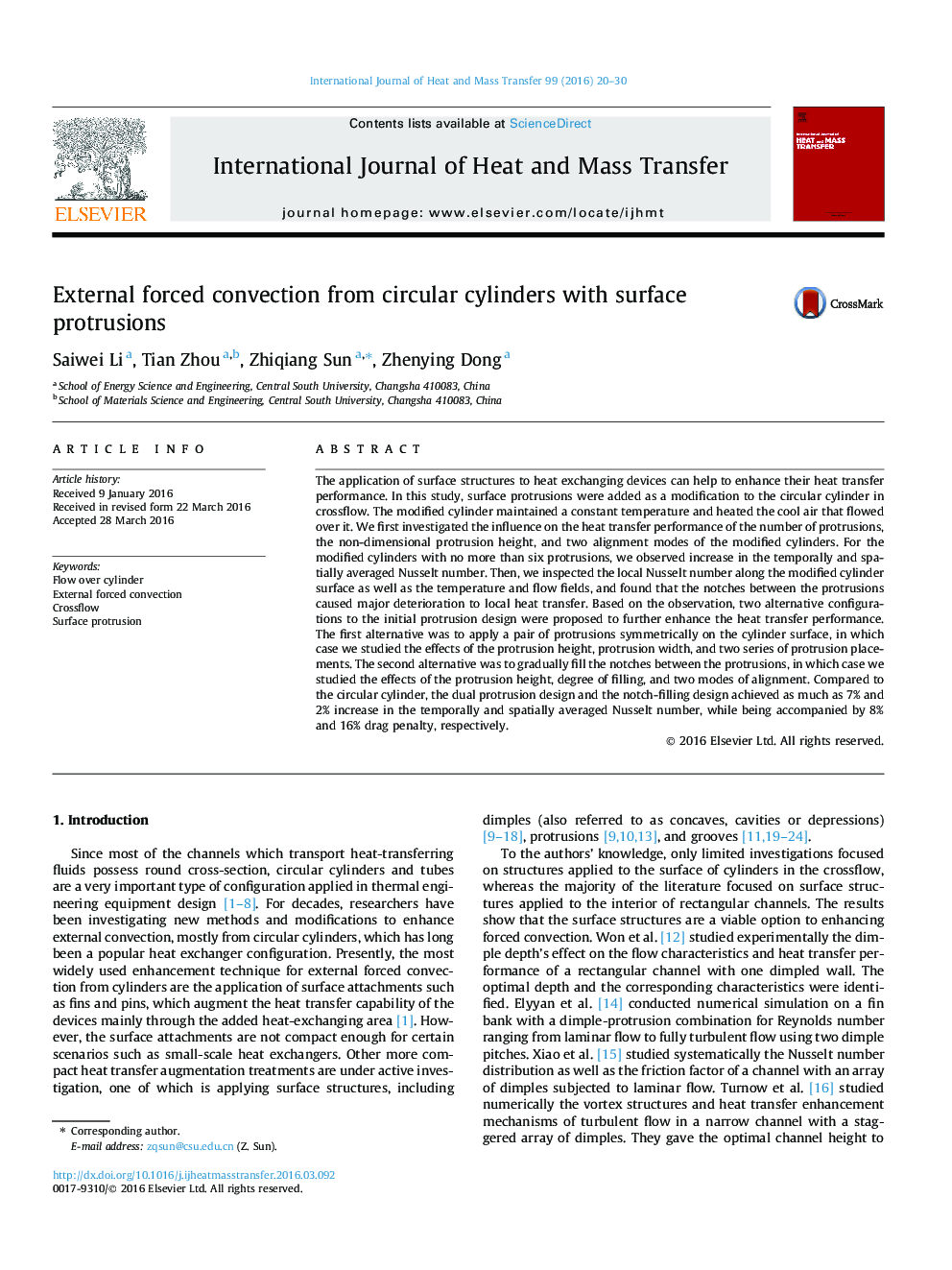| Article ID | Journal | Published Year | Pages | File Type |
|---|---|---|---|---|
| 656429 | International Journal of Heat and Mass Transfer | 2016 | 11 Pages |
Abstract
The application of surface structures to heat exchanging devices can help to enhance their heat transfer performance. In this study, surface protrusions were added as a modification to the circular cylinder in crossflow. The modified cylinder maintained a constant temperature and heated the cool air that flowed over it. We first investigated the influence on the heat transfer performance of the number of protrusions, the non-dimensional protrusion height, and two alignment modes of the modified cylinders. For the modified cylinders with no more than six protrusions, we observed increase in the temporally and spatially averaged Nusselt number. Then, we inspected the local Nusselt number along the modified cylinder surface as well as the temperature and flow fields, and found that the notches between the protrusions caused major deterioration to local heat transfer. Based on the observation, two alternative configurations to the initial protrusion design were proposed to further enhance the heat transfer performance. The first alternative was to apply a pair of protrusions symmetrically on the cylinder surface, in which case we studied the effects of the protrusion height, protrusion width, and two series of protrusion placements. The second alternative was to gradually fill the notches between the protrusions, in which case we studied the effects of the protrusion height, degree of filling, and two modes of alignment. Compared to the circular cylinder, the dual protrusion design and the notch-filling design achieved as much as 7% and 2% increase in the temporally and spatially averaged Nusselt number, while being accompanied by 8% and 16% drag penalty, respectively.
Keywords
Related Topics
Physical Sciences and Engineering
Chemical Engineering
Fluid Flow and Transfer Processes
Authors
Saiwei Li, Tian Zhou, Zhiqiang Sun, Zhenying Dong,
